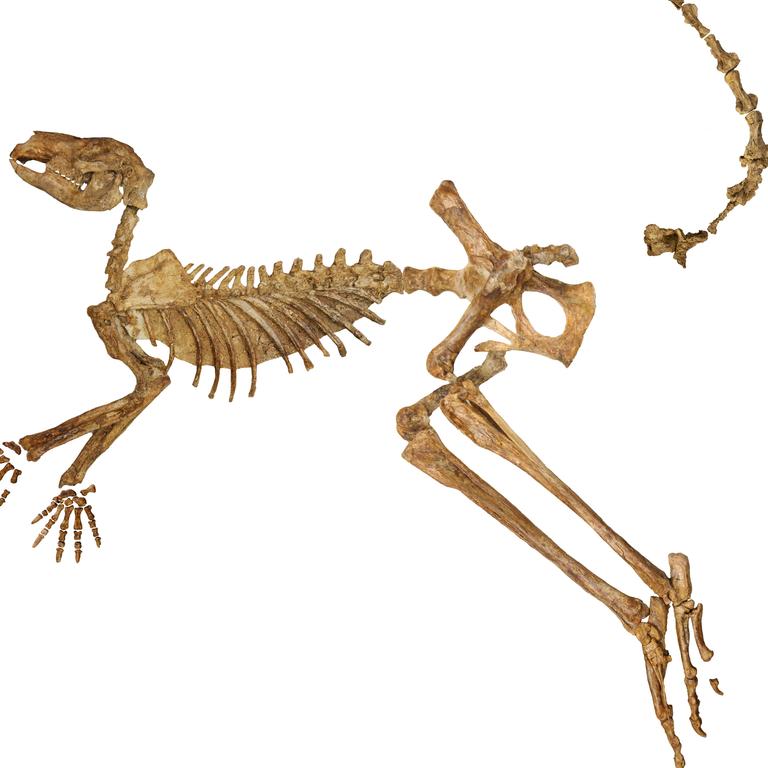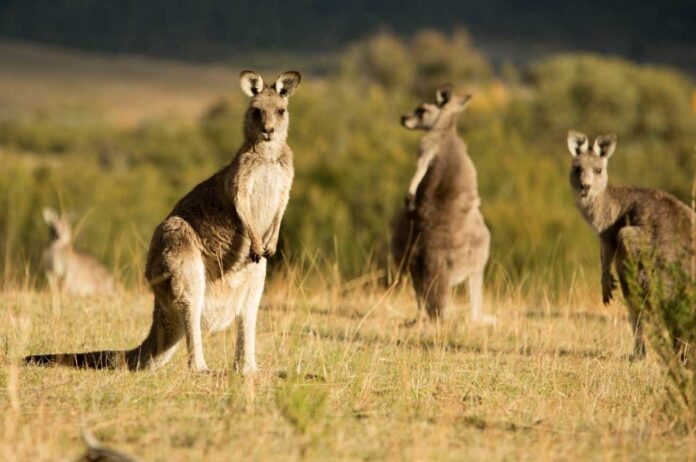Australia’s ancient landscapes harbor secrets buried deep within the earth, waiting to be unearthed by curious minds. Recently, a team of intrepid paleontologists from Adelaide’s Flinders University embarked on a journey through time, unraveling the mysteries of prehistoric Australia. Their expedition led to the discovery of three new species of giant kangaroos, shedding light on the extraordinary diversity of Australia’s ancient fauna.
The saga began with the unearthing of complete kangaroo fossils from the depths of Lake Callabonna in South Australia, spanning years of meticulous excavation and analysis. These fossils, dating back from 5 million to 40,000 years ago, unveiled a captivating narrative of the now-extinct genus Protemnodon. Within the trove of fossils, researchers identified three previously unknown species of kangaroos, each possessing unique characteristics that set them apart from their modern counterparts.
Protemnodon viator, the largest of the newly discovered species, stood as a colossal giant in the ancient Australian landscape, dwarfing even the largest red kangaroo alive today. With elongated limbs built for swift propulsion, this behemoth of a kangaroo traversed the terrain with astonishing agility, showcasing a mastery of locomotion unmatched by its contemporaries.
In contrast, Protemnodon mamkurra and Protemnodon dawsonae revealed a different facet of prehistoric kangaroo life. While mamkurra likely moved on all fours, its robust build hinted at a more lumbering existence, perhaps reserved for moments of startle or necessity. On the other hand, dawsonae, with its enigmatic traits, beckons further inquiry into the behaviors and ecological niches of these ancient giants.
The journey to uncover these titans of the past was no small feat. Over five years of painstaking research, Isaac Kerr and his team meticulously examined over 800 specimens, employing advanced imaging techniques to breathe life into fossils long dormant in the annals of time. Their efforts culminated in a comprehensive study published in Megataxa, marking a significant milestone in paleontological understanding.
Yet, amidst the triumph of discovery, questions linger about the fate of these majestic creatures. The extinction of all Protemnodon species on mainland Australia 40,000 years ago remains shrouded in mystery, leaving researchers pondering the factors that led to their demise. As the scientific community delves deeper into the annals of prehistory, the quest for answers continues, beckoning explorers to unearth the secrets of Australia’s ancient past.
With each fossil unearthed and each discovery made, the tapestry of Australia’s natural history grows richer, offering glimpses into a world long gone but not forgotten. As Professor Gavin Prideaux aptly remarked, “The fossils of this genus are widespread, and they’re found regularly, but more often than not, you have no way of being certain which species you’re looking at.” Yet, with each revelation, the veil of uncertainty is lifted, illuminating the path towards a deeper understanding of Australia’s prehistoric legacy.
As the research team sets its sights on new horizons, embarking on expeditions to Papua New Guinea in search of further fossils, the saga of Australia’s extinct giants continues to unfold. With each step forward, we inch closer to unraveling the enigmatic mysteries of the past, breathing life into the forgotten realms of ancient Australia.



